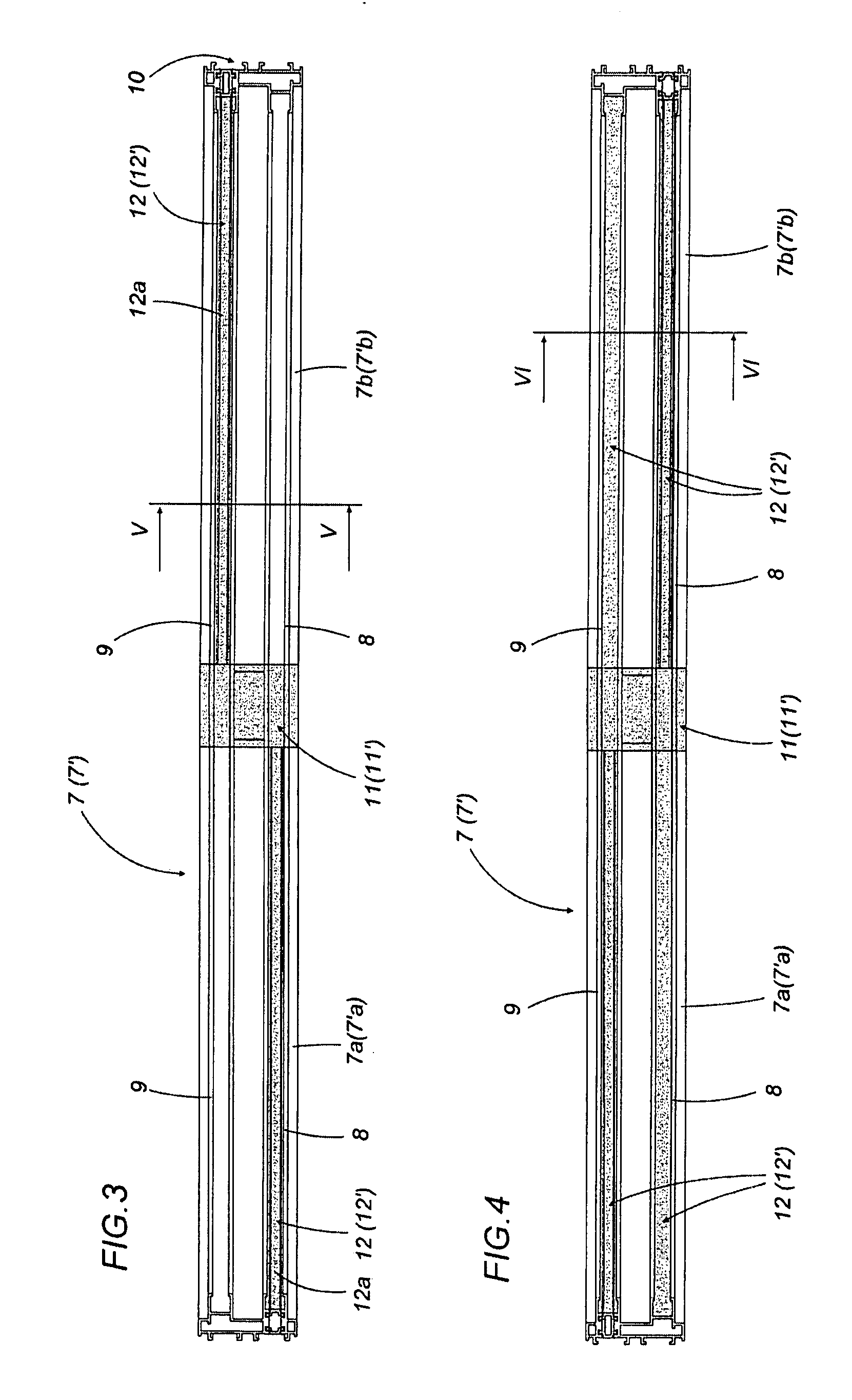Profile for sliding windows or doors, method for making the profile, and window or door obtained with the profile
a technology profiles, applied in the field of profiles for sliding windows or doors, can solve the problems of insufficient heat insulation relative to the other types of windows or doors, inability to achieve acceptable performance, and difficulty in using this type of window or door, so as to achieve high heat insulation properties and maintain mechanical and aesthetic similarity.
- Summary
- Abstract
- Description
- Claims
- Application Information
AI Technical Summary
Benefits of technology
Problems solved by technology
Method used
Image
Examples
Embodiment Construction
[0035]With reference to the accompanying drawings, and in particular with reference to FIGS. 3, 4 and 12, the profile, labeled 7 as a whole, is used to make frames for sliding windows or doors 1 comprising, amongst other things, at least one fixed frame 2 formed by two crosspieces 3 and 4 two stiles 5 and 6.
[0036]One of the profiles, labeled 7, forming at least a first lower crosspiece 3, comprises two sliding tracks 8 and 9, parallel with one another, and emerging from a lower base body 10.
[0037]As shown in FIGS. 3 to 6, this profile 7, forming the lower crosspiece 3, is divided, transversally, into two halves 7a and 7b substantially equal and associated, at respective ends, with a matching element 11 for connecting and joining the halves 7a, 7b.
[0038]The connecting and joining element 11 basically forms the central portion of the lower crosspiece 3 and has heat insulation properties (for example, it is made of a synthetic material, such as polyamide or in any case a material suit...
PUM
| Property | Measurement | Unit |
|---|---|---|
| Length | aaaaa | aaaaa |
| Heat | aaaaa | aaaaa |
| Thermal properties | aaaaa | aaaaa |
Abstract
Description
Claims
Application Information
 Login to View More
Login to View More - R&D
- Intellectual Property
- Life Sciences
- Materials
- Tech Scout
- Unparalleled Data Quality
- Higher Quality Content
- 60% Fewer Hallucinations
Browse by: Latest US Patents, China's latest patents, Technical Efficacy Thesaurus, Application Domain, Technology Topic, Popular Technical Reports.
© 2025 PatSnap. All rights reserved.Legal|Privacy policy|Modern Slavery Act Transparency Statement|Sitemap|About US| Contact US: help@patsnap.com



